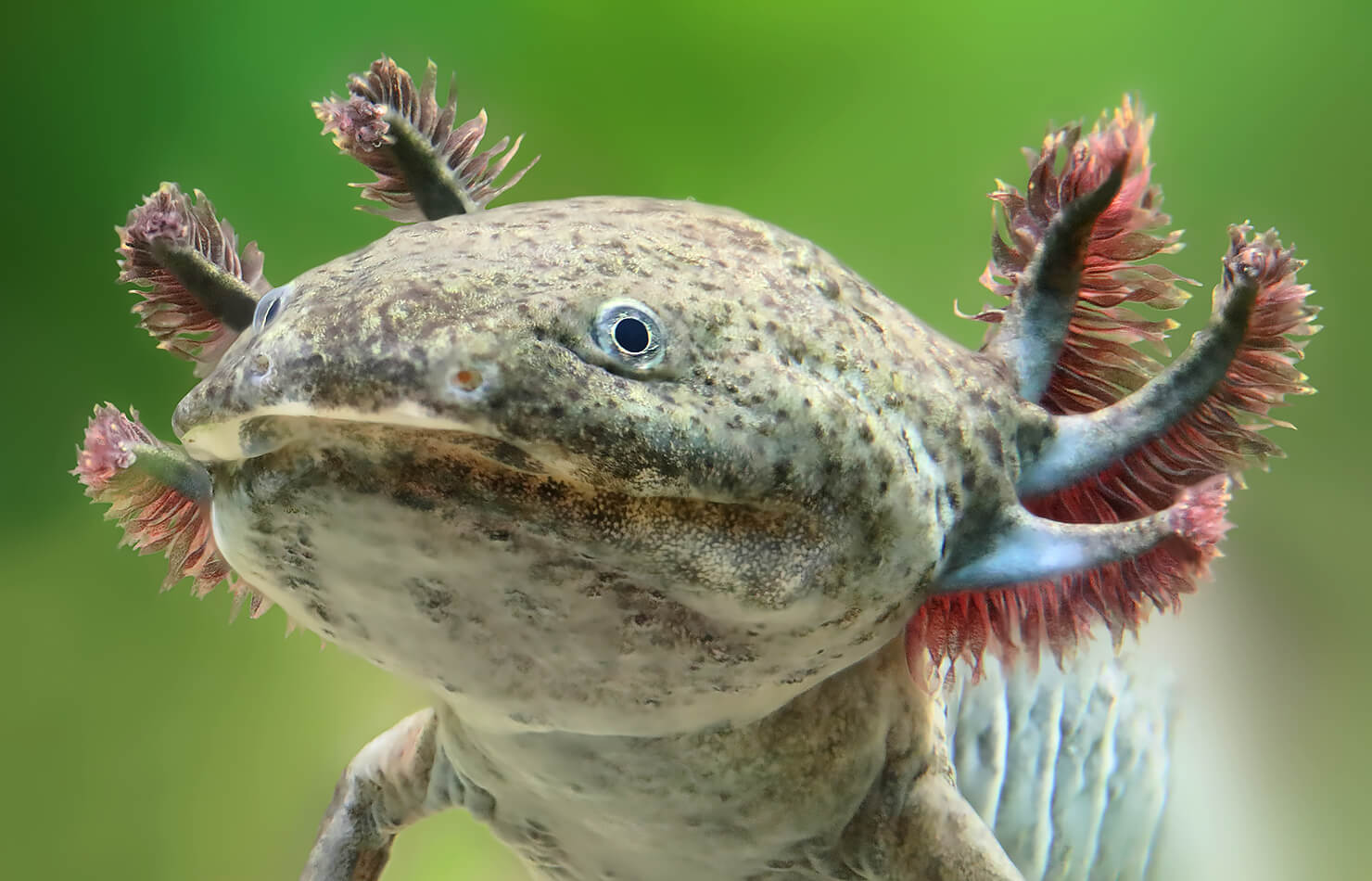What Type Of Animal Is A Axolotl
Shrouded in mystery, and defying typical biological laws like metamorphosis, the axolotl (pronounced AX-oh-lot-ul), a type of salamander, keeps its webbed feet firmly placed in infancy throughout its life.
Unlike other salamanders, axolotls are neotenic, meaning they keep juvenile characteristics into adulthood. The axolotl remains aquatic (similar larvae) their entire life. Though it develops functional lungs, it uses its fancy, feathery gills to breathe underwater. Like youngsters, they retain external gills, a tail, and a trunk fin, and lack moveable eyelids.
Naturally occurring in Lake Xochimilco and Lake Chalco in the southern United mexican states Urban center neighborhood of Xochimilco, these fascinating creatures are rarely seen in person.
Descended from the tiger salamander, the axolotl is "young", having inhabited key United mexican states for only about the final 10,000 years, according to some experts. Indigenous to these 2 spring-fed lakes along the southern edge of the Basin of Mexico, much of its suitable habitat has been drained. The Xochimilco-Chalco basin, once about 77 foursquare miles (200 square kilometers) of marshes, swamps, and lagoons, was significantly reduced 85 years agone when drainage projects were completed.
The axolotl is charismatic and steeped in Mexican history, culture, and identity.
That said, little information exists nigh the ecology of axolotl populations. This situation is surprising, given the popularity of the axolotl for scientific written report. Even so, their small and generally inaccessible populations brand it difficult to obtain information about their behavior.
What is known about axolotls has been obtained from laboratory colonies.
Salamander superpowers. Axolotls are nighttime-colored and tin can shift their hue a few shades lighter or darker equally needed for cover-up! Pink and calorie-free-colored axolotls are bred by humans as pets for their "pleasing" shades.
They are too used in laboratories to study some other superpower: regenerating their limbs, lungs, heart, jaws, spines, and even parts of their brain! Scientists have found that axolotls tin regrow a new limb five times perfectly, in a few weeks—without even a scar. Every tissue is replaced: skin, os, cartilage, muscle, and stem cells. Other organs can regenerate countless times and exist completely functional. Naturally, scientists would like to harness that power and utilize it to homo medicine.
It is said that this axolotls are over ane,000 times more resistant to cancer than mammals—some other superpower worth investigating.

Babe face. An axolotl tin reach eighteen inches in length, but nowadays grows to nigh 9 inches. Axolotls are dark-colored with greenish mottling; some may have argent highlights on the skin. It has a broad, flat body with a large caput donning its signature feathery gills waving gently in the water. Its mouth is oftentimes aptitude into a slight grin or is otherwise expressive. Round, dark eyes with yellow, iridescent irises have in its murky environment. It has lizard-like limbs that carry it along the lake bottom. It weighs virtually equally much every bit a can of soup. In a compression, the axolotl tin move an astonishing x miles per 60 minutes (fifteen kilometers per hr).
Source: https://animals.sandiegozoo.org/animals/axolotl
Posted by: thompsonocces1967.blogspot.com

0 Response to "What Type Of Animal Is A Axolotl"
Post a Comment